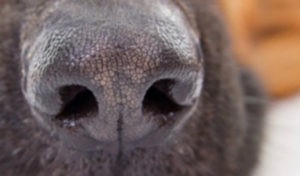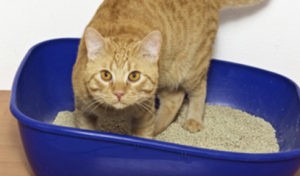 1. Trick-or-treat candies ARE NOT for pets.
1. Trick-or-treat candies ARE NOT for pets.
All forms of chocolate—especially baking or dark chocolate—can be dangerous, even lethal, for dogs and cats. Symptoms of chocolate poisoning may include vomiting, diarrhea, rapid breathing, increased heart rate, and seizures. Halloween candies containing the artificial sweetener xylitol can also be poisonous to dogs. Even small amounts of xylitol can cause a sudden drop in blood sugar and subsequent loss of coordination and seizures.
2. DO NOT leave pets out in the yard on Halloween.
Vicious pranksters have been known to tease, injure, steal, and even kill pets on Halloween night. Inexcusable? Yes! But preventable nonetheless. Black cats are especially at risk from pranks or other cruelty-related incidents. In fact, many shelters do not adopt out black cats during the month of October as a safety precaution.
3. Keep pets confined and away from the door.
Indoors is certainly better than outdoors on Halloween, but your door will be constantly opening and closing, and strangers will be on your doorstep dressed in unusual costumes. This, of course, can be scary for our furry friends, which can result in escape attempts or unexpected aggression. Putting your dog or cat in a secure crate or room away from the front door will reduce stress and prevent them from darting outside into the night…a night when no one wants to be searching for a lost loved one.
4. Keep glow sticks away from pets.
While glow sticks can help keep people safe on Halloween night, they can add some unwanted drama to the holiday if a pet chews one open. Thankfully, the liquid inside glow sticks is non-toxic, so it won’t actually make pets sick, but it does taste awful. Pets who get into a glow stick may drool, paw at their mouth, become agitated, and sometimes even vomit. If your pet does chew on a glow stick, offer some fresh water or a small meal to help clear the material out of the mouth.
5. Keep Halloween plants such as pumpkins and corn out of reach.
While small amounts of corn and pumpkin can be fed safely to many pets, ingesting uncooked, potentially moldy Halloween pumpkins or corn displays can cause big problems. Gastrointestinal upset is a possibility whenever pets eat something they aren’t used to, and intestinal blockage can occur if large pieces are swallowed. Some types of mold produce mycotoxins that can cause neurological problems in dogs and cats.
6. Don’t keep lit pumpkins around pets.
If you are using candles to light your jack-o-lanterns or other Halloween decorations, make sure to place them well out of reach of your pets. Should they get too close, they run the risk of burning themselves or causing a fire.
7. Keep electric and battery-powered Halloween decorations out of reach.
Electric and battery-powered Halloween decorations are certainly safer than open candles, but they still can present a risk to pets. Pets who chew on electrical cords can receive a possibly life-threatening electrical shock or burn. Batteries may cause chemical burns when chewed open or gastrointestinal blockage if swallowed. Shards of glass or plastic can cause lacerations anywhere on the body or, if swallowed, within the gastrointestinal tract.
8. Don’t dress your pet in a costume unless you know they’ll love it.
If you do decide that Fido or Kitty needs a costume, make sure it isn’t dangerous or simply annoying to your pet. Costumes should not restrict movement, hearing, eyesight, or the ability to breathe.
9. Try on pet costumes before the big night.
Don’t wait until Halloween night to put your pet in a costume for the first time. Any time you want to introduce your pet to something new, it’s best to go slowly. Get your pet costumes early, and put them on for short periods of time (and piece by piece, if possible). Make it a positive experience by offering lots of praise and treats. If at any time, your pet seems distressed or develops skin problems from contact with a costume, consider letting him go in his “birthday suit.” A festive bandana may be a good compromise.
10. IDs, please!
If your dog or cat should escape and become lost, having the proper identification will increase the chances that he or she will be returned. Collars and tags are ideal if a Good Samaritan is able to collect your wayward pet, but microchips offer permanent identification should the collar or tag fall off. Just make sure the information is up-to-date. Use Halloween as a yearly reminder to double check your address and phone number on tags and with the company who supports pet microchips.




